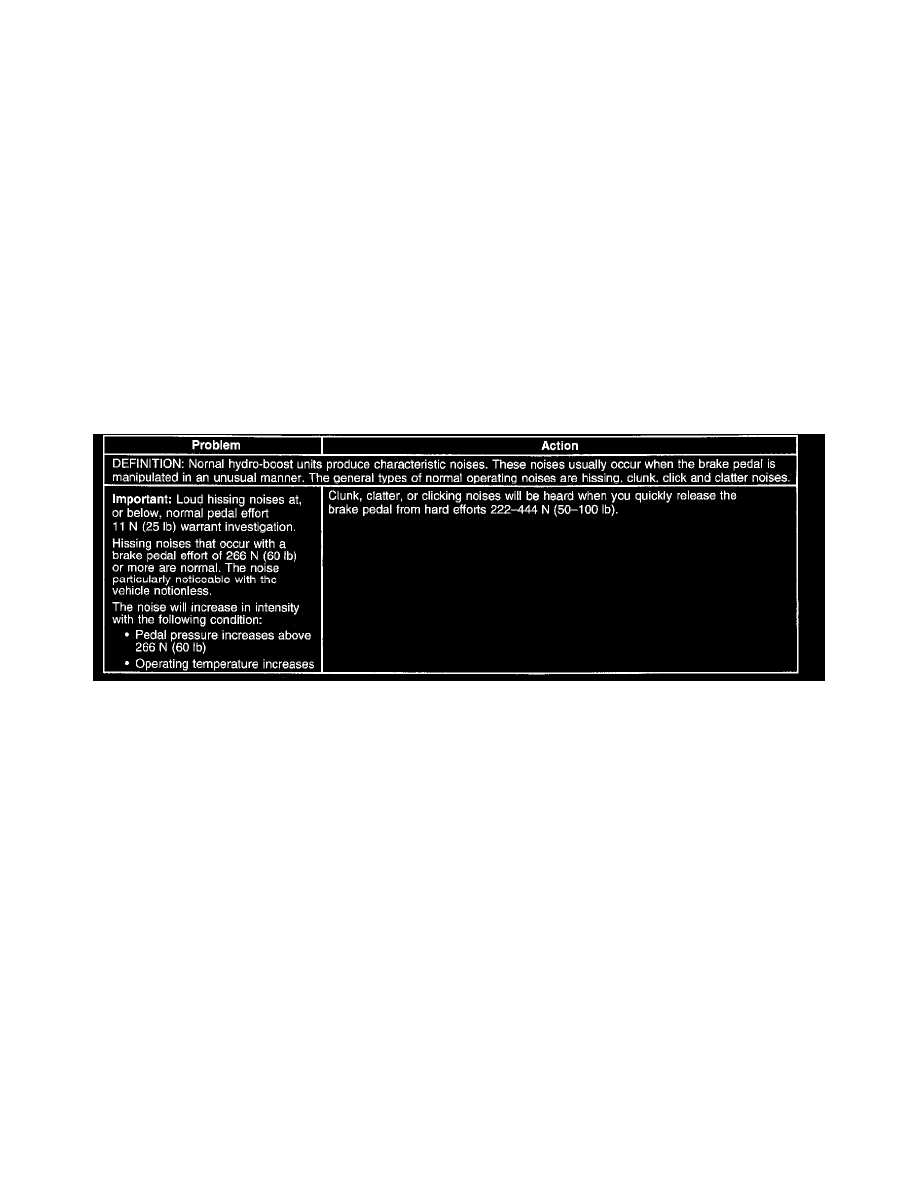K 1500 Truck 4WD V8-5.3L VIN T (1999)

Hydraulic Brake Booster: Component Tests and General Diagnostics
Accumulator Leak-Down Test
1. Start the engine.
2. Charge the accumulator by pressing the brake pedal or by completely turning the steering wheel in 1 direction and then in the other.
3. Turn the engine off. Let the vehicle sit for an hour.
4. Perform 2 power assisted applications with the engine off.
5. If the accumulator fails to hold a charge after 1 hour, but functions normally after charging, the accumulator valves are malfunctioning.
Use the following procedure in order to repair this condition:
5.1.
Disassemble the power brake booster.
5.2.
Replace the accumulator valves.
6. If the charging and discharging of the accumulator is audible, but the accumulator still fails to hold a charge, the accumulator valves are
malfunctioning.
Use the following procedure in order to repair the malfunction:
6.1.
Disassemble the power brake booster.
6.2.
Replace the accumulator valves.
7. Press the brake pedal 30 times in order to empty the accumulator.
8. The accumulator can will rotate or wobble if the accumulator has lost the gas charge. Replace the accumulator if there is rotating or wobbling
present.
Brake Assist System
The hydraulic booster uses fluid pressure from the power steering system. A malfunctioning power steering system can affect the hydraulic booster. A
malfunctioning booster can affect the steering system. Perform the following procedure before beginning any extensive testing.
1. Inspect all of the power steering and the brake pipe connections for leaks and restrictions.
NOTICE: Power steering fluid and brake fluid cannot be mixed. If brake seals contact power steering fluid or steering seals contact brake fluid,
seal damage will result.
2. Ensure that the master cylinder is properly filled.
3. Ensure that the power steering pump reservoir is properly filled.
If the power steering fluid contains air, bleed the power steering system.
4. Inspect the power steering pump belt for wear and improper tension. Refer to the appropriate procedure from the following list:
-
Drive Belt Excessive Wear Diagnosis
-
Drive Belt Excessive Wear Diagnosis
5. Test the power steering pump pressure. Refer to Power Steering System Test Procedure in Power Steering System.
Noise from the relief valve is normal when applying the brakes. Firmly applying the brake pedal while the vehicle is parked also causes noise. The
noises are the result of air allowed into the fluid during these conditions. The air remains in the fluid only temporarily.
Power steering pump noise can be confused with transmission, rear axle, or generator noise.
The following noises come from the hydraulic booster. The noises may be cause for a customer concern. Noises may be normal and temporary. Noises
may be a sign of wear, or evidence of air in the hydraulic booster or the power steering system
-
You may notice a moan or low frequency hum (usually accompanied by a vibration in the brake pedal or steering column) during parking or other
low speed maneuvers. The moan may be caused by insufficient power steering fluid, or air in the fluid. Holding the steering wheel turned as far as
possible in 1 direction holds the power steering pump at relief pressure. Holding the pump at relief pressure for more than 5 seconds causes air to
